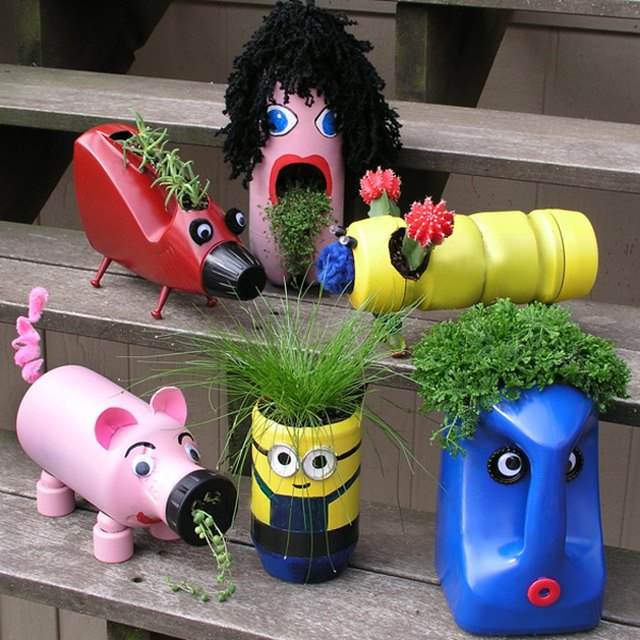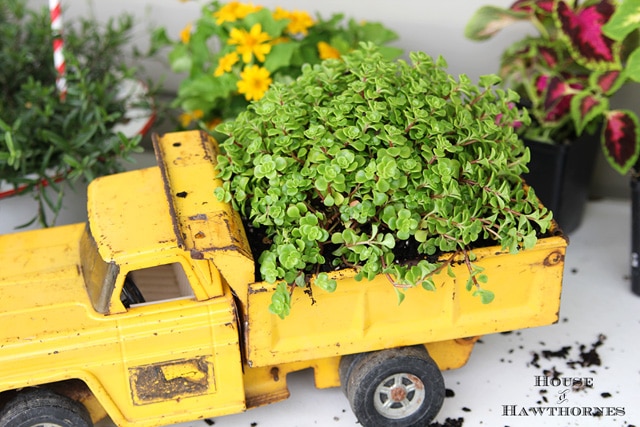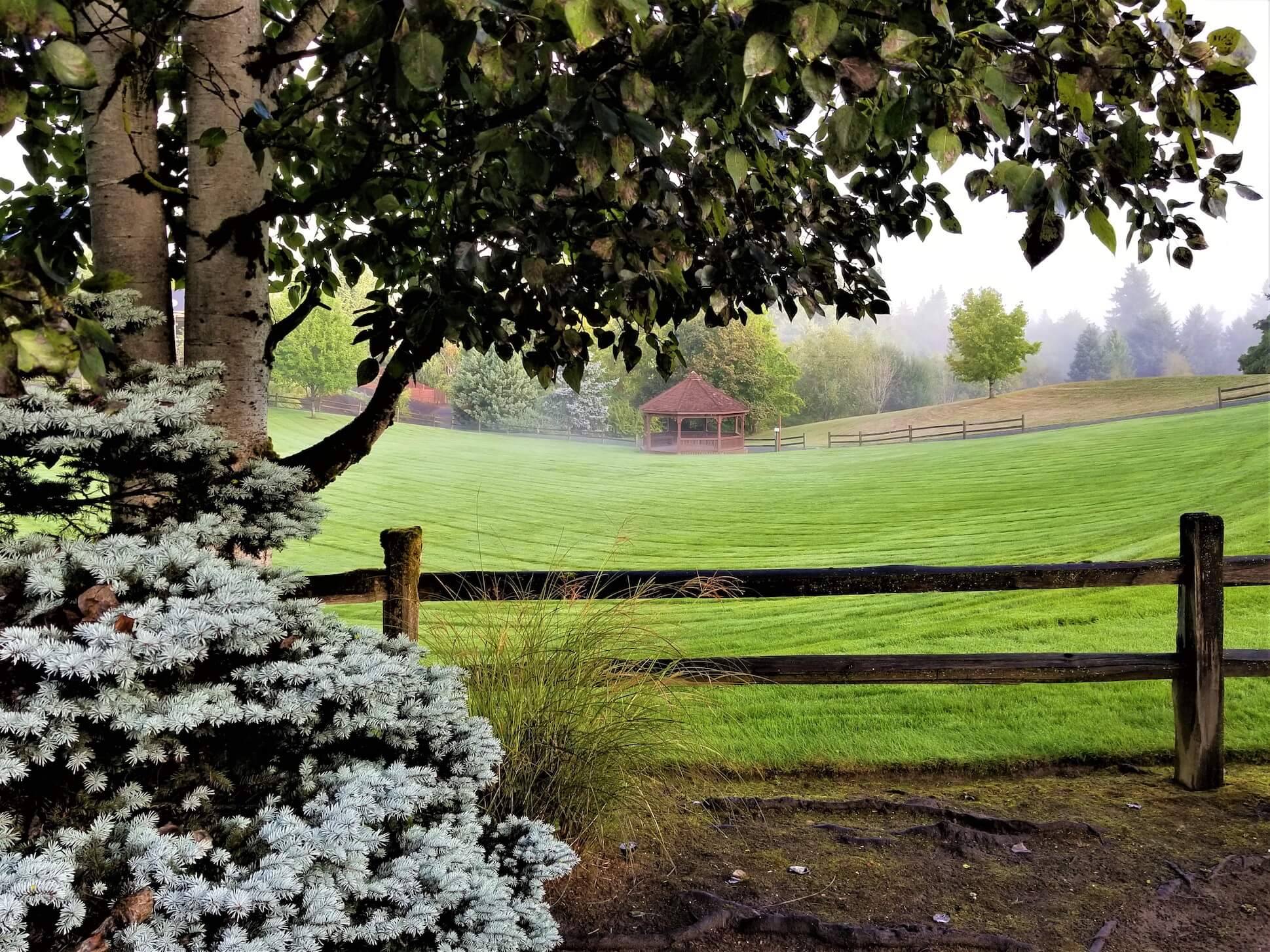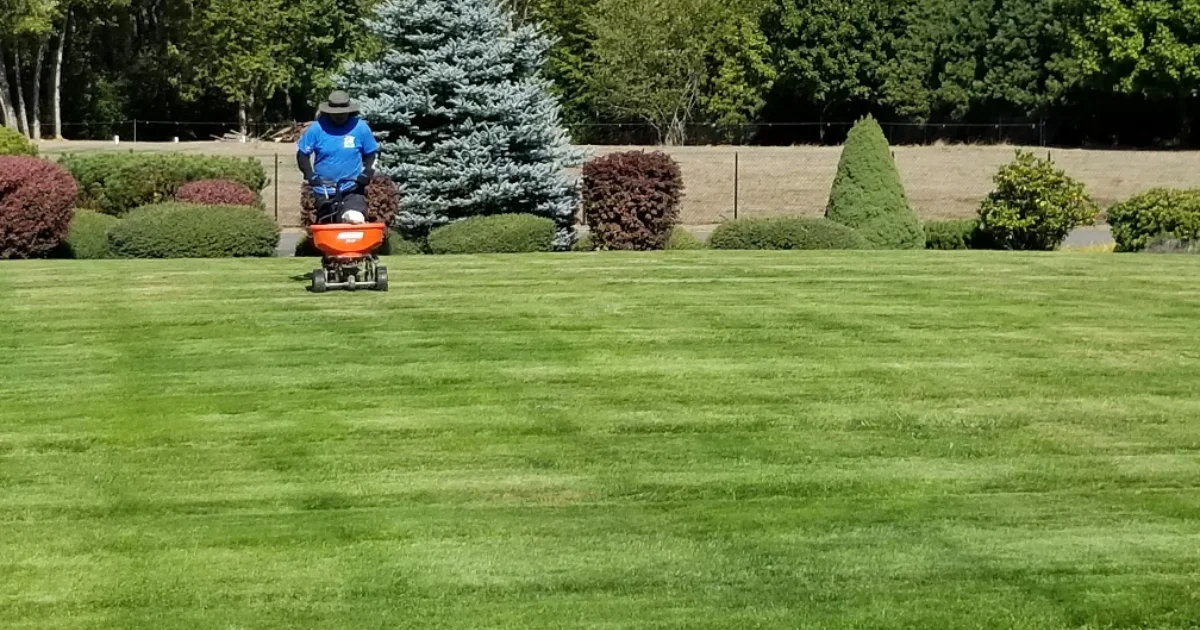
After months of cold weather, your lawn is in need of some tender loving care to revive its lush green beauty. At Frontier Landscaping, we understand the importance of proper spring lawn care to ensure your yard thrives throughout the seasons.
Rake and Remove Debris
The first step in spring lawn care is to clear away any debris that has accumulated over the winter. Fallen leaves, branches, and other debris can smother the grass and prevent healthy growth. Raking also helps to loosen matted patches of grass, allowing air and nutrients to reach the soil.
Survey Your Lawn for Trouble Areas
Our soil in many areas can have a large percentage of clay. This can make the soil heavy and affect root growth. The soil can get compacted and create drainage issues. Loosening the soil can be done through aeration, but in some cases, a landscape drain may need to be installed.
Lawns can become habitats for pests, diseases, and weeds. We can help you identify a proper treatment plan to keep your lawn looking green and lush.
Aerate the Soil
Compacted soil can inhibit root growth and water absorption, leading to a lackluster lawn. Aerating your lawn in the spring helps to alleviate compaction by creating small holes in the soil, allowing air, water, and nutrients to penetrate deeply.
Additional benefits of aeration:
- Limits fertilizer runoff
- Improves ability to absorb water
- Slows buildup of thatch
- Builds strong root system and layer of topsoil
Overseed Bare Patches
Winter can be harsh on your lawn, leaving behind bare patches where the grass has died off. Overseeding these areas in the spring helps to fill in the gaps and promote a thick, healthy lawn.
Fertilize Strategically
Spring is the ideal time to fertilize your lawn, providing essential nutrients to support healthy growth. However, it’s important to fertilize strategically, using the right type and amount of fertilizer for your lawn’s needs. Too much fertilizer can lead to excessive growth and nutrient runoff, while too little can result in a lack of growth and a healthy appearance.
Mow with Care
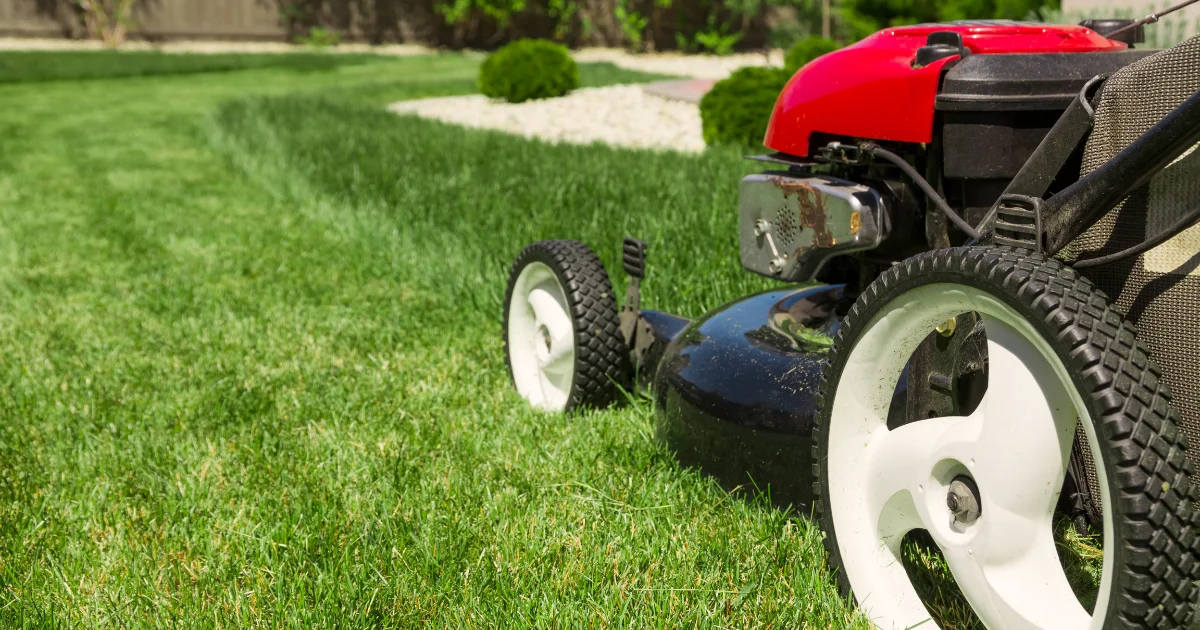
As your lawn begins to grow in the spring, it’s time to pull out the lawnmower. However, resist the urge to cut the grass too short, as this can stress the lawn and make it more susceptible to disease and weeds. Instead, try to mow at a height of around 3 inches the first time you mow.
By following these essential spring lawn care tips from Frontier Landscaping, you can help your lawn thrive throughout the season and beyond. With a little bit of effort and attention now, you can enjoy a lush, green lawn that enhances the beauty of your home for months to come. Our maintenance crew can schedule regular visits to keep your yard looking its best.
If your garden looks more like an urban jungle this spring, there are tasks you can do for a spring yard clean-up.

Just like your house may need spring cleaning so does your yard. There are several spring yard tasks to complete this time of year.
Yard Tasks For Spring
Remove Yard Debris
First, remove yard debris like tree branches or twigs that may have fallen over the winter. Rake up leaves that may be covering your lawn from fall or blew in during heavier winds. This winter and spring we have had wind, hail, snow, rain, and sunshine, sometimes all on the same day! Your landscape may have taken a beating.
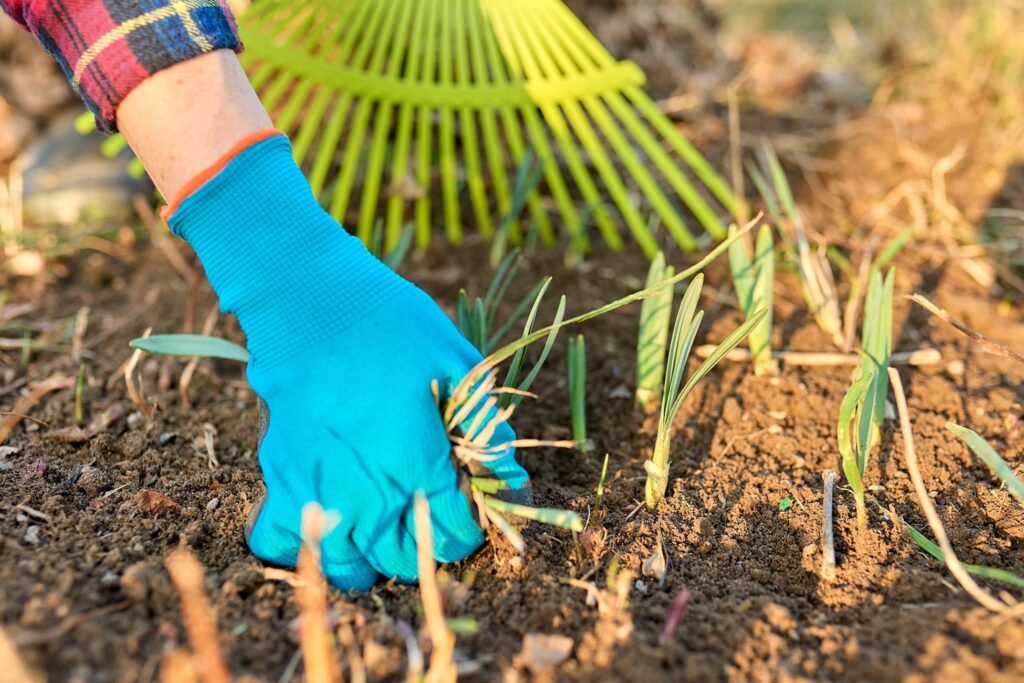
Get a Head Start on Weeds
The weeds are starting to emerge or maybe they never left for the season? Getting a head start on weeding can help you prevent a bigger problem later in the year. Debris removal of weeds is important so they don’t reseed themselves and regrow.
Add Fresh Mulch
Adding fresh mulch as a top layer in planting beds will instantly help spruce up the look of your yard and help your plants retain more moisture this summer. Mulching also helps keep weeds from taking over before you can pull them by cutting off their light source to grow.
Prune Your Plants
Prune back trees, shrubs, and plants to enhance the plant health and appearance of your property. Remove deadwood on plants and look to see if there are any shrubs or trees that may need removing.
Remove any dead growth on perennials and consider dividing them if they have grown large enough. Consider dividing bulbs or larger perennials. By dividing perennials you can add more interest to other parts of your yard for free.
Add Soil Amendments
Adding compost or fertilizer to the soil around your plants is also a good idea to keep your garden looking healthy for the season. A well-cared-for landscape can also increase your property value and may prevent trees and other plants from failing health later on.
We Can Help With Your Spring Yard Clean-Up
Frontier Landscaping offers not only seasonal yard cleanups but also land and brush clearing and debris removal for properties that may have been reclaimed by nature with extensive weeds and blackberries. When our team has finished with your yard clean-up, your property will be ready for any new project or space you wish to create this spring!
If you are feeling overwhelmed, need a one-time service, or regular landscape maintenance you can count on Frontier. Call or email us today for a free estimate on spring clean-up! (360) 574-8979 or [email protected].
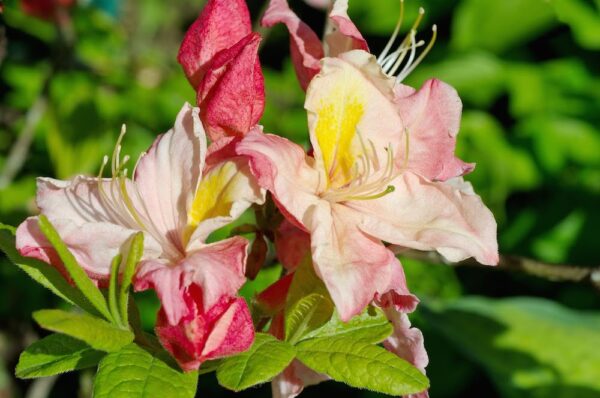
Yard Maintenance is an important part of preparing your garden for the up-coming year. Whether you have a landscaping crew do this, or you work in the yard yourself. Don’t miss these important steps:
- Following the recent snow, clean up any de-icing products from driveways and paths, and keep off planting beds. Add some gypsum to any beds that may have been affected by these products.
- You may have already added some soil amendments to planting beds, as part of your Fall/Winter garden maintenance. If not, it’s not too late for this. The Pacific Northwest still has many months of rain before the drier season is upon us, this will help the organic amendment penetrate the soil, and encourage good soil life and drainage.
- It’s also a good time to adjust soil pH, if your soil is too acidic, you can add some agricultural lime. If your soil is too alkaline, you can add aluminum sulfate, sphagnum peat or organic soil amendment, (most of these tend to be acidic). Adjusting pH will ensure that your plants can absorb the nutrients they need.

- Now is the time to fertilize plants. Rhododendrons, Camellias and Azaleas will appreciate an acid fertilizer mix for their upcoming blooms. Other trees and shrubs can be fed a general organic fertilizer. Your lawn will also appreciate some fertilizer, as it comes out of Winter dormancy.
- Cut back grasses; Miscanthus, Calamagrostis and Pennisetum, can now be cut down to the base, so they will be ready for the new Spring growth. The stalks can even be left on planting beds as mulch to keep weeds down. Perennials can also be cleaned up and any dead leaves and flower stalks removed, once danger of heavy frost is past, for example, Sedums and Echinacea.
- Pull up any weeds and make sure to dispose of them in your green bin, don’t throw them in the compost bin, unless you want weeds sprouting up! If you didn’t already apply bark mulch or dust, top dress the soil to keep the weeds down.
We hope that these tips will help you with your yard maintenance.
Contact Frontier Landscaping for help with this and so much more!
Keeping Busy and #StayHome
As we’re being asked to #StayHome, parents and families are looking for fun ways to keep kids busy. We found a few fun ideas from Growing A Jeweled Rose to help keep kids busy in the garden. We’ve selected our favorites and listed them here. If you try any of these, please post your photos or if you have any other ideas, please share in the comments below. As adults, some of these look fun to us too, so don’t feel like you can’t participate if you don’t have kids at home.
If your kids are a little older and/or are ready to help in the yard, here are a few ideas we found to help keep them busy helping you
Debris Clean- Up
One thing you can do is to clean up your yard. This means removing leaves, twigs, branches, dirt and other items that have accumulated over the fall and winter months. There are some common issues in Clark County & Portland Metro, so if you’re seeing bare batches, there are a few issues you could be facing.
Make it fun – make it a race to gather debris and bring it to the compost pile. Use a stopwatch (or app) to time them.
Composting
Collected leaves, cuttings, spent foliage and other debris will decompose and create nutrient rich humus for amending your garden. Adding organic compost can be a great way to improve the condition of your soil. Composting also helps to improve water retention, airflow and can improve the strength and feel of the soil. The debris in your yard, such as leaves, plants, grass clippings and even kitchen scraps (not animals) can make great compost. You’ll need to turn it frequently to speed up the decomp process.
Make a game for your kids by having them take turns turning the compost. Time them and have them pass the turning tool around to all of them.

In a year when winter has been particularly long, cold, and wet, it’s not unusual to enter spring with a distressed lawn. The high pressure produced by intense winter conditions creates a lot of opportunities for pests and diseases to move in and cause problems.
Here are a few common issues we observe in the Clark County and Portland metro area. If you’re seeing bare patches, brown patches, or circular patches of pink or white, you may be facing one of the following:
Red Thread
Red thread, or Laetisaria fuciformis, is an opportunistic lawn disease. Its name comes from thin red strands this fungus sends out from the tips of infected grass blades. If your lawn and soil isn’t well drained, a wet winter can throw the door wide open for problems due to this infection. Prolonged exposure to moisture is the primary cause of red thread in unhealthy turf.
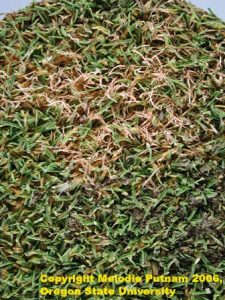
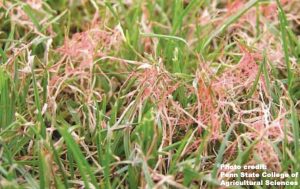
From a distance, you may notice circular patches of pinkish grass ranging up to 8 inches in diameter. It’s important to take a closer look to see if ‘threads’ are present, though, as there are similar symptoms that result from other kinds of issues.
The good news is that red thread does not destroy grass roots and crowns. There is potential for full recovery if you commit to thorough treatment. The best way to ward off future infections of red thread is by conditioning your soil, providing good drainage, and sticking to a proven, consistent maintenance plan.
Pink Snow Mold
Pink snow mold, as its name implies, is associated with extended snow cover. Like red thread, it’s caused by a fungus, Microdochium nivale. Pink and white foamy fungal spores sit on top of infected grass blades, creating pink circular splotches across the lawn. In a prolonged wet and snowy winter, it can result in severe damage to turf.

The road to recovery begins with skilled thatching and aeration. Committing to best practices for fertilization, drainage, snow management, and pest control is the key to keeping damage from snow mold to a minimum, whatever future winters may bring.
Crane Fly
Crane fly infestations are notorious for their potential to kill an entire lawn. While adult crane flies swoop and fly around the yard, it’s the eggs they lay down that spell serious trouble. Crane fly larvae (also known as ‘leatherjackets’) are 1-inch long and tan or grayish white in color. The hungry larvae wreak havoc on turf as they feast on grass roots and crowns.
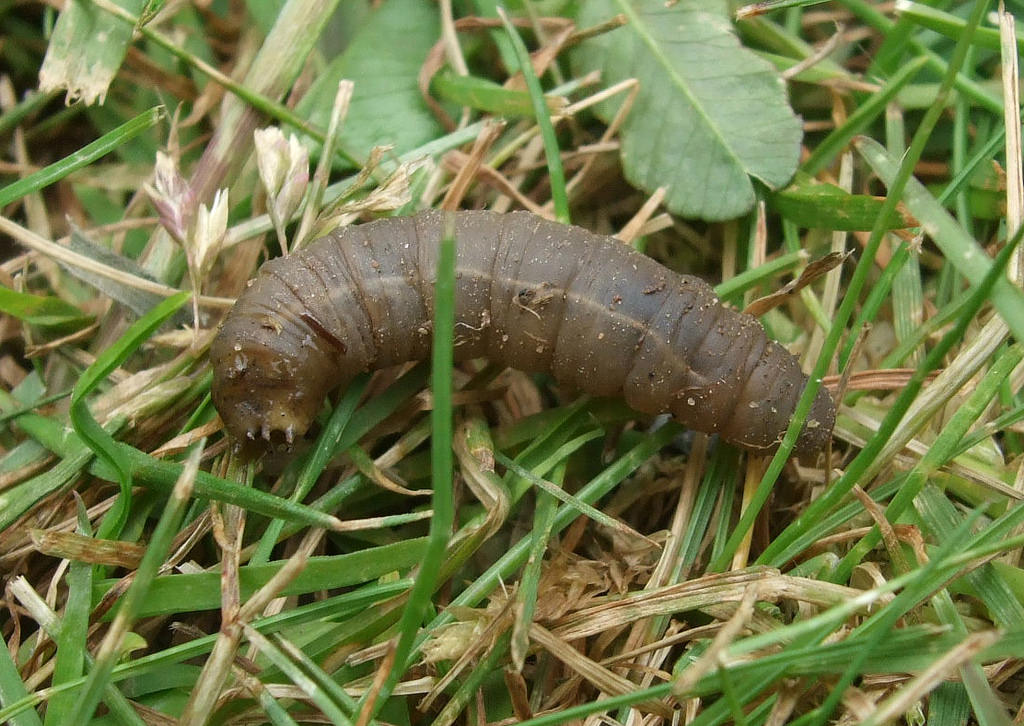
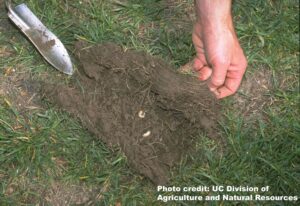
Look for patches of damaged grass that may appear to grow together and spread. Peeling back the soil will reveal whether crane fly larvae are to blame. While a healthy lawn can handle a medium population of larvae, a teeming infestation means it’s time to call for help.
The encouraging thing about battling crane fly is the potential for treatment and full recovery. The crew at Frontier Landscaping has generated impressive results for lawn restoration and would be happy to work with you to save your lawn if you’re dealing with an outbreak this year.
Maintaining healthy turfgrass is the #1 way to prevent future pest and disease issues!
Lawn Rescues and Revamps
In the moist Pacific Northwest, especially after a very wet winter, it’s not uncommon to have problems show up if your soil and grass haven’t been regularly maintained for optimal health.
If you’re in need of treatment, the Frontier Landscaping crew is expertly qualified to help you back to a thriving, healthy lawn. The process we have developed through years of local experience consistently produces successful, healthy turf.
Aeration
Aeration is a generic term for exposing soil to the air by removing plugs of soil from the turf. The openings created by aeration help water and nutrients move more easily through the soil.
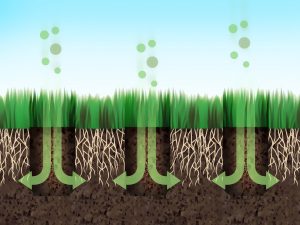
While it’s common practice to leave soil plugs in a lawn after aeration, the crew at Frontier Landscaping has determined that the most successful lawns are created when we pick up and dispose of the hardened plugs. This additional step allows topdressing to better penetrate the new holes in the soil, enhancing the entire aeration process overall. While it is a greater effort, this step has consistently shown itself to be an effective key to helping sick lawns bounce back quickly and look better than ever.
Additional benefits of aeration:
- Limits fertilizer runoff
- Improves ability to absorb water
- Slows buildup of thatch
- Builds strong root system and layer of topsoil
Frontier Landscaping recommends aeration once each year for all lawns to maintain great health.
Reseeding and Fertilization
Once soil has been aerated, ¼ to 1 inch of rich soil conditioner is applied. This mix works down through the new holes left by aeration and sets the lawn up for improved future drainage.
Why does this matter? Good soil texture promotes healthy turf. In turn, healthy turf is significantly less susceptible to disease.
Once soil has been treated, your lawn will be ready to be reseeded and fertilized. It’s not uncommon to see new grass emerging within a month of completion.
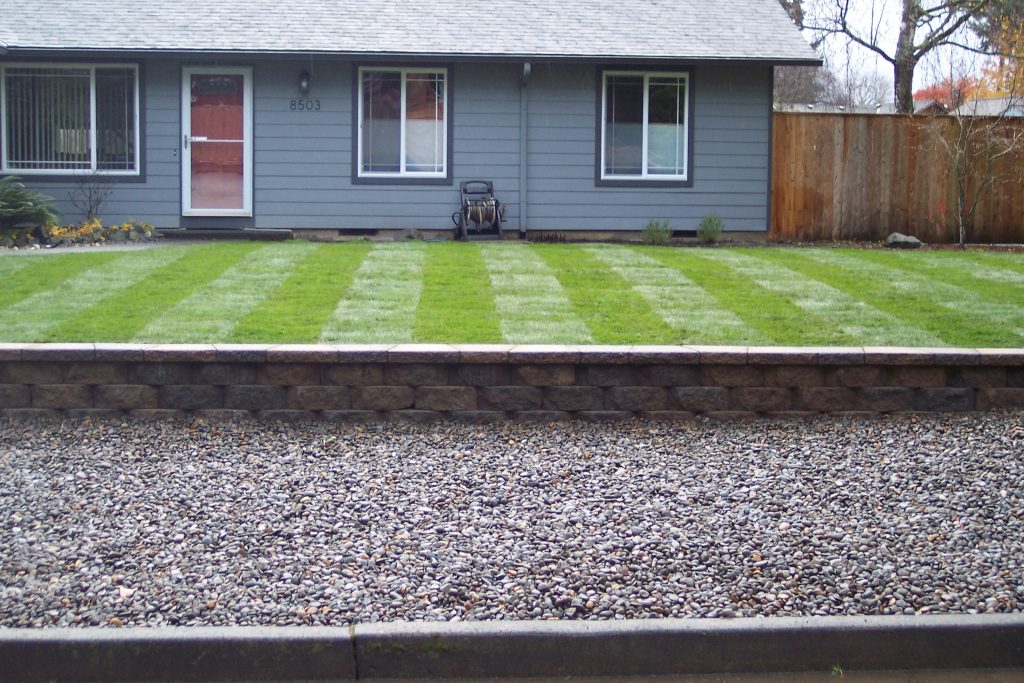
Intense seasons of wet weather can result in significant pest and disease pressure on lawns, especially if the grass isn’t robust and healthy to begin with.
If you find yourself facing ugly bare spots, remember that many issues are treatable if caught in time. Give us a call to learn about treatment options for your lawn. We’ll help you through and are happy to design a custom care plan for the future based on the specific needs of your landscape.
Ready for a winter lawn rescue? Call (360) 574-8979 or send us an email to arrange a consultation today.
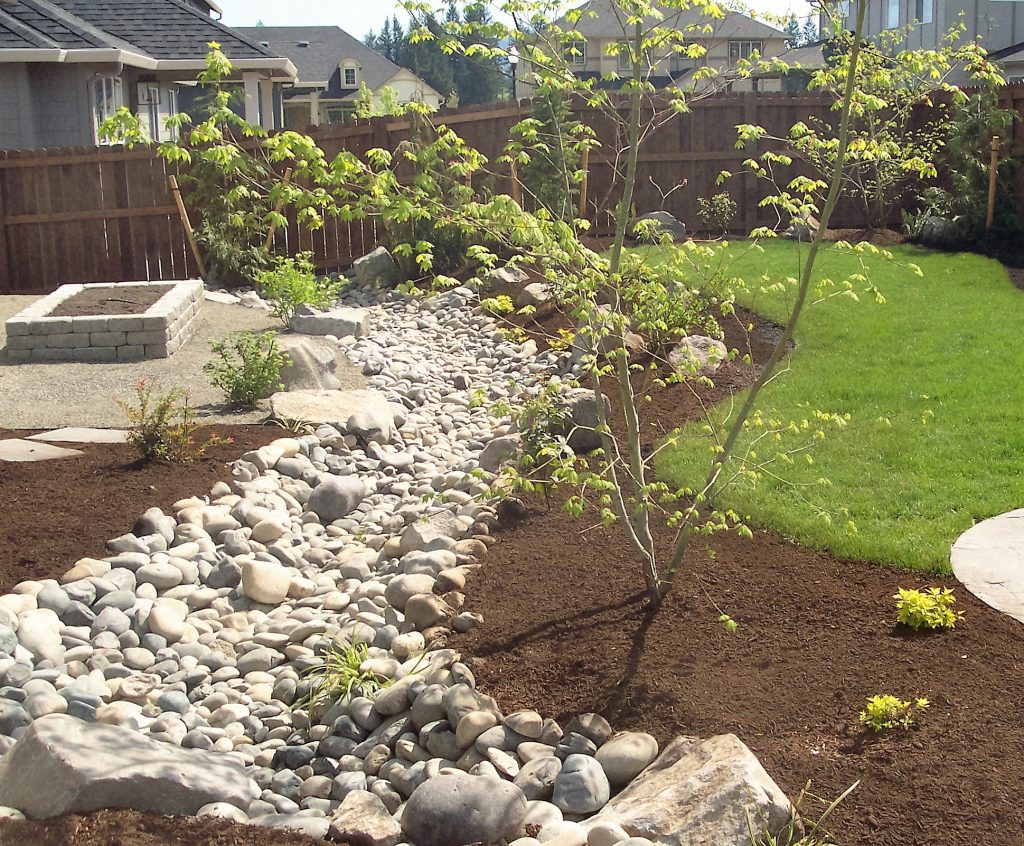
Dry creek beds provide attractive, functional relief, especially if your landscape is plagued by standing water. In the wet PNW, drainage problems are a common headache. Do any of these sound familiar?
- Floo
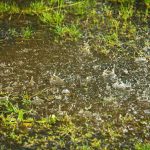 ded flower beds
ded flower beds
- Pooling water below a deck
- Swampy places in the lawn
- Puddles around a foundation
Leaving drainage issues unaddressed has serious consequences, from dead lawn and plants to costly repairs and decreased property value.
The Good News
Frontier Landscaping has years of experience designing and implementing features that effectively carry water away from problem areas. Dry creek beds are star performers, particularly in sloped terrain. They work twice as hard for a landscape by running water from Point A to B, and standing alone as an attractive feature in drier months of the year.
“Even property owners with no landscape drainage issues may choose to install a dry creek bed due to the elements of natural beauty in the way they look.”

Controlling Water Flow
Dry creek beds are an excellent choice for addressing places in the landscape that are hard-hit by heavy rains. While a flat place in the yard may benefit more from a simple lawn drain, gradients and hillsides need the water capacity and speed that a dry creek bed can provide during extreme conditions. Effectively redirecting the flow of water saves you from ongoing erosion and long-term damage.
Water-Wise Gardening
When property owners are looking for a greener way to landscape, dry creek beds play an exciting role. Different-sized rocks, boulders, and choice plantings give eye-pleasing texture to outdoor spaces, but require much less water than an expanse of lawn. While bark dust alone can look flat, a dry creek bed introduces definition and contrast. It’s aesthetically pleasing and earth-friendly — a winning combination.
Dry Creek Beds for Natural Beauty
We regularly install dry creek beds to add natural beauty to a landscape. Expertly balancing a few key ingredients (a natural shape, native plantings, multiple sizes of stone) brings a natural, organic flow to an area. The results are breathtaking in any season, wet or dry.
Additional Considerations
No two landscapes are exactly alike, and the solution that works for one may not work for another. While dry creek beds are particularly suited to slopes and hillsides, they aren’t usually the best choice for flat ground.
Other elements, like French drains, catch basins, and lawn drains also have a part to play — and that’s just the beginning. Frontier’s installation team has years of experience solving drainage problems for local property owners.

French drain pipe (L), installed as a garden path (R).
French drains are a functional solution for flat terrain and less water. They often have a part to play in designing an overall solution for moving water in a landscape. Read more about them here.

Ranging in size from 6 to 24 inches, catch basins can be square or circular. These grated drains are typically placed alongside a driveway or in a low or sloped spot in the yard or hardscaping, like a patio. This is a straightforward fix for diverting water away from wet spots. A blend of rocks around it allows the catch basin to blend in with the landscape.
From basic to beautiful, there are many combinations of elements we can put to work that provide an effective long-term solution for landscape drainage issues in your landscape.
Ready to learn how can we help you solve your standing water problems? Call (360) 574-8979 or email us for a consultation. We’ll work with you to protect your landscape with the right landscape drainage solutions to meet your needs.
Find more inspiration for dry creek beds and landscape design by visiting us on Houzz!










